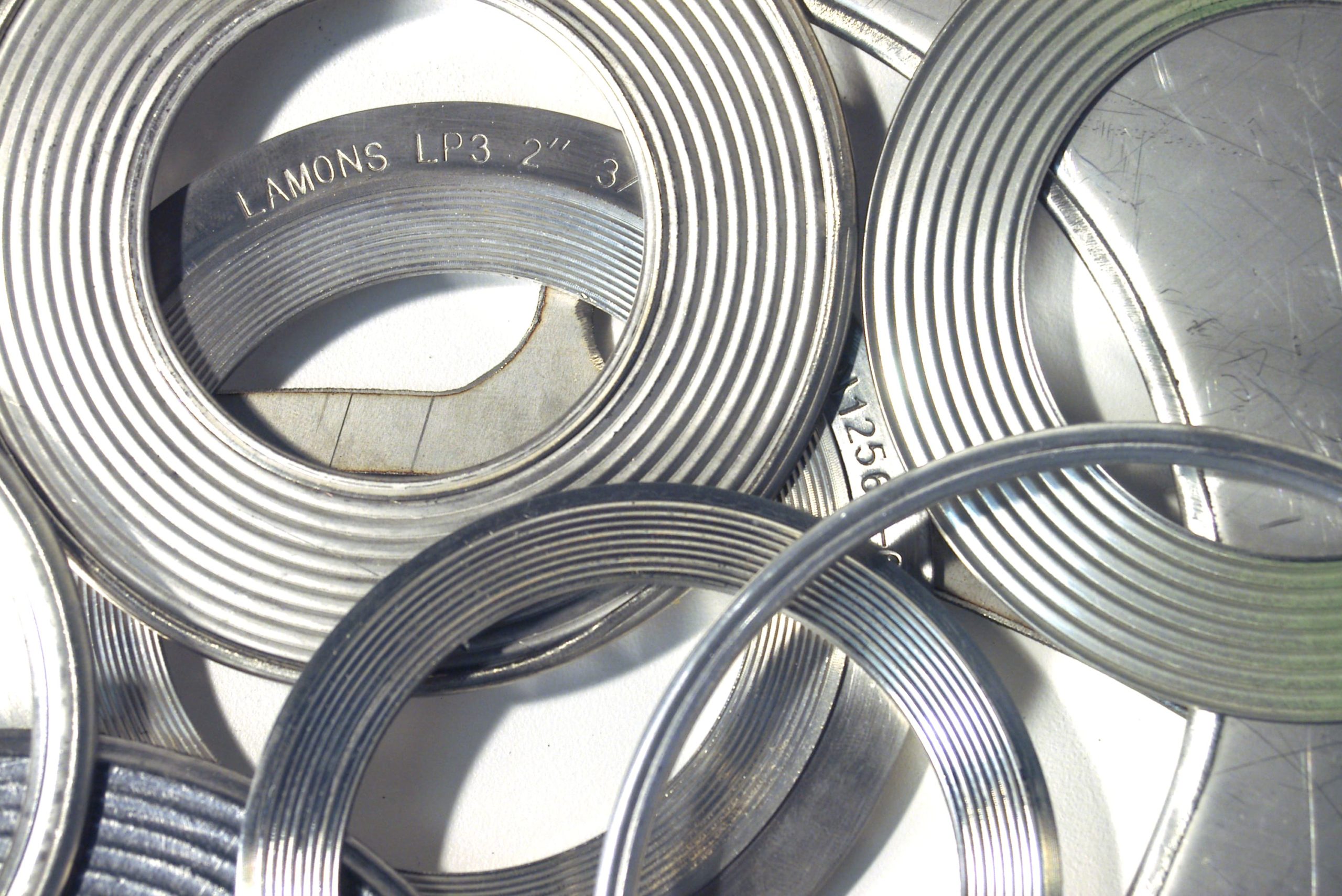The Evolution of Heat Exchanger Gaskets

Heat exchangers perform an essential operational role in a wide variety of industries, from energy to transportation to chemical processing. Regardless of industry, effective sealing is critical to overall heat exchanger (HE) performance, but heat exchangers can present significant challenges in this regard: gaskets must be able to withstand elevated temperatures, high pressures, and thermal cycling.
Over time, major improvements in sealing technology have addressed many of the persistent long-term issues with HE applications, including bolt relaxation and failure to maintain adequate load in operation. Let’s discuss how HE sealing technology has evolved to accommodate a wider range of gasket stress, offer more forgiveness during bolt-up, and work effectively for a wide variety of bolt grades.
Double-Jacketed Style 300
This gasket was originally designed for heat exchangers in the early 1900s. The main sealing material is the 26 gauge metal jacket. Earlier designs used asbestos as a compressible filler material, but currently the most common filler is flexible graphite. Since this style features a Earlier designs used asbestos as a compressible filler material, but currently the most common filler is flexible graphite. Since this style features a metal-to-metal seal, it requires smoother flange surfaces (100 RMS max per ASME PCC-1 guidelines). Given that this is an older design, it’s not surprising that newer gasket types offer generally better performance.
Solid Flat Metal Style 310
This old style gasket is commonly used for floating head HE designs. Its metal-only design makes it suitable for high temperature and high pressure applications, but it also requires a smooth flange sealing surface (63 RMS per ASME PCC-1 guidelines). Like the double-jacketed style, the solid flat metal style offers less robust performance than newer designs.
Spiral Wound
This gasket type features metal winding and a soft filler material. Some of the most common heat exchanger styles include:
- Style W (winding only)
- Style WI (winding with inner ring)
- Style WP (winding with ribs for partitions)
- Style WIP (winding with inner ring and ribs)
Spiral wound gaskets offer better recovery for thermal cycling than double-jacketed gaskets but also have less structural stability due to winding.
CMG-EX
A corrugated metal gasket for heat exchangers (CMG-EX) consists of a corrugated core with a soft facing material that is thinner than a traditional CMG. The CMG-EX accommodates radial shearing that can often occur during heat exchanger start-up or normal operation. Its corrugated core is designed to deflect, offering greater recovery for thermal cycling than a spiral wound gasket.
Kammprofile
The Kammprofile gasket, or Kammpro, has become a go-to gasket for heat exchangers since the early 2000s. Its resilient design features a serrated metal core and soft facing, both of which are available in a wide range of materials. It offers chemical compatibility in most applications and is highly customizable in terms of thickness, shape, and size. In fact, its robust construction makes it a good choice for larger sizes. The Kammpro, which is currently used in the vast majority of heat exchanger applications in Europe, is a reliable problem-solver that outperforms previous HE gaskets. The Kammpro gasket is also growing in popularity in the U.S., offering a performance upgrade with typical compatibility for use in old or new sealing grooves, with or without nubbins.
Lamons® CorruKamm®
The CorruKamm (corrugated Kammprofile gasket) was developed in 2014. With a machined corrugated core and a soft facing material, it combines the benefits of CMG-EX and Kammprofile into a gasket that is more forgiving of mis-alignment and a lack of parallelism than other gasket styles. The CorruKamm offers excellent recovery, requires a low Y-value, withstands high gasket stress, and is able to deflect and compress under load, making it an ideal problem-solver for thermal cycling applications.
Selecting the right gasket for your heat exchanger application
Heat exchanger sealing solutions have come a long way. Current designs have evolved to accommodate a wider range of gasket stress, offer more forgiveness during bolt-up, and work for a wide variety of bolt grades. If you want to solve leaking and other recurring sealing issues, it may be time to upgrade. As a long-time partner of clients in a variety of industries, the experts at Lamons are ready to help you select a gasket that meets your performance requirements.



